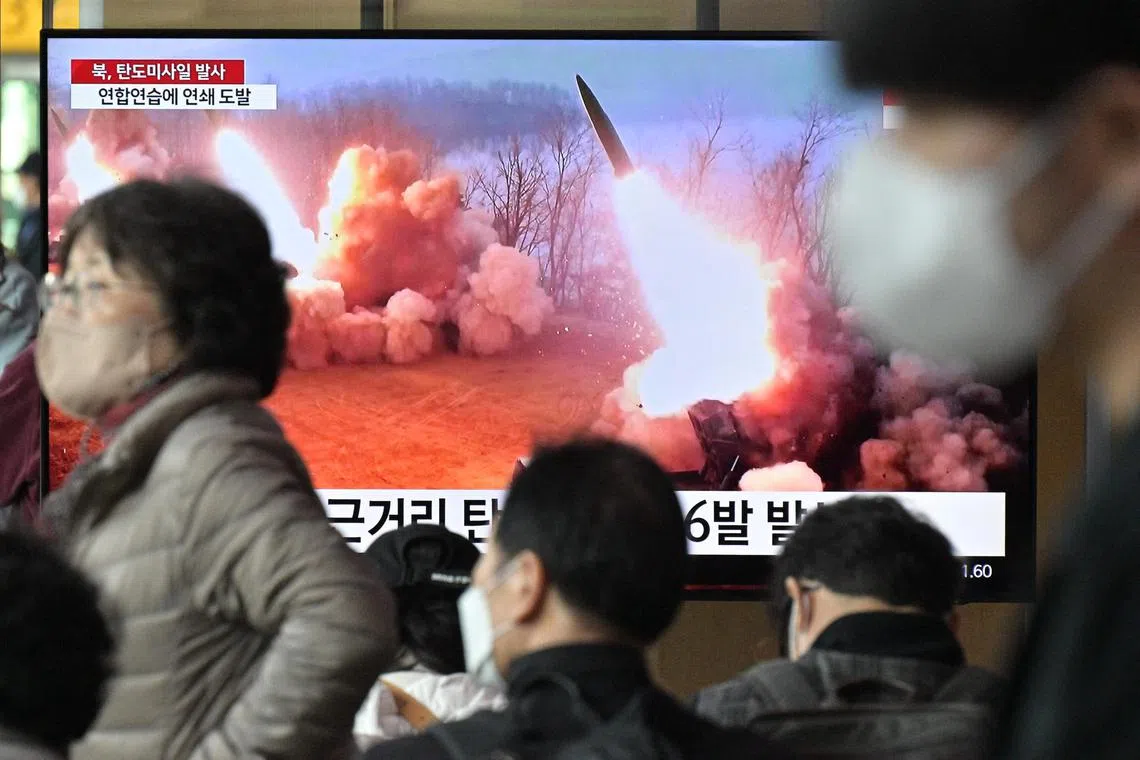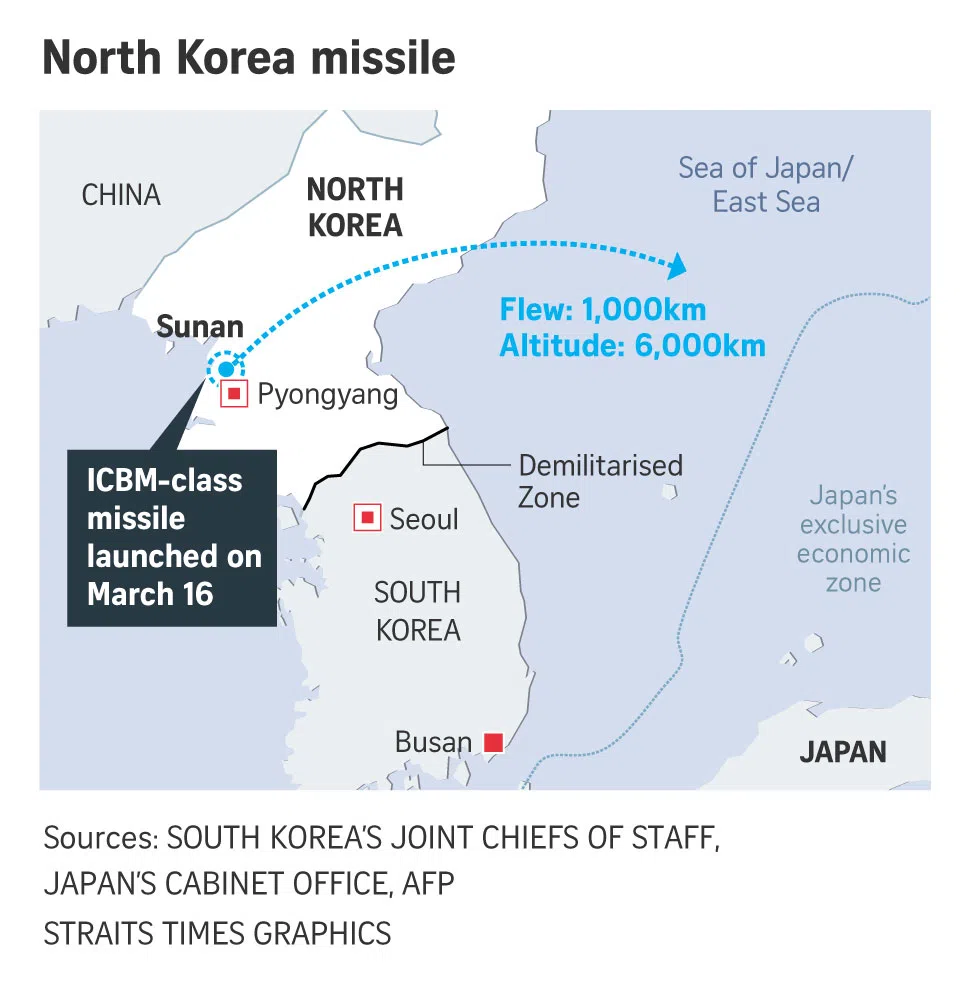North Korea launches apparent ICBM ahead of South Korea-Japan summit
Sign up now: Get ST's newsletters delivered to your inbox

North Korea has conducted multiple missile launches this week amid ongoing joint South Korea-US military drills.
PHOTO: AFP
Follow topic:
SEOUL – North Korea fired a suspected intercontinental ballistic missile (ICBM) into the sea between the Korean peninsula and Japan on Thursday, hours before South Korea’s President was to fly to Tokyo for a summit expected to discuss ways to counter the nuclear-armed North.
Pyongyang has conducted multiple missile launches this week South Korea-United States military drills
The missile, fired at 7.10am from Pyongyang, flew about 1,000km at a lofted trajectory, South Korea’s Joint Chiefs of Staff (JCS) said.
Japan’s Defence Ministry said the missile appeared to have flown higher than 6,000km for about 70 minutes. It most likely landed outside Japan’s exclusive economic zone, 200km west of Oshima-Oshima Island off Hokkaido, northern Japan, the ministry said.
Japan has not confirmed any information on damage from the missile, Chief Cabinet Secretary Hirokazu Matsuno said, adding that it had delivered a protest through North Korea’s embassy in Beijing.
“North Korea’s missile launch is a barbaric act that escalates its provocation to the entire international society,” Mr Matsuno said. “We will confirm close cooperation with South Korea and the US towards North Korea’s complete denuclearisation at the Japan-South Korea summit today.”
Seoul convened a national security council meeting and “strongly condemned” the missile launch as a grave act of provocation threatening international peace.
South Korean President Yoon Suk-yeol ordered his country’s military to carry out drills with the US as planned, saying North Korea would pay for its “reckless provocations”, according to his office.
South Korean and American forces began 11 days of joint drills, dubbed “Freedom Shield 23”, on Monday, held on a scale not seen since 2017 to counter the North’s growing threats.
North Korea has long bristled at the allies’ drills as a rehearsal for invasion.
Speaking at the Geneva based Conference on Disarmament on Thursday, North Korean Ambassador to the United Nations Han Tae Song said recent launch exercises by the North were countermeasures against threats to its security.
The US-South Korea drills are an “extremely dangerous provocative military action” that could drive the situation into an “uncontrolled and unpredictable crisis”, he said
Japanese Prime Minister Fumio Kishida said after the launch that the most important issue was regional peace and stability.
White House National Security Council spokesman Adrienne Watson said the US “strongly condemns” North Korea’s latest launch for needlessly raising tensions in the region.
US Indo-Pacific Command has assessed the missile did not pose an immediate threat to US personnel or territory, or to its allies.

Thursday’s launch came as Mr Yoon headed to Japan for the first bilateral summit with Mr Kishida
The two US allies have agreed to share real-time tracking of North Korean missile launches, and have vowed to further deepen military cooperation.
“Today’s missile launch is an apparent protest not only to the South Korea-US drills but also to South Korea and Japan moving to step up their military cooperation,” said Mr Cheong Seong-chang, a senior fellow at the Sejong Institute.
“But such a protest will only push the Yoon government to further strengthen cooperation with Japan, and trilaterally with the United States, and have a boomerang effect,” he added.
It was not clear what type of ICBM was launched on Thursday, but a South Korean military official said the missile appeared similar to the Hwasong-17 – a liquid-fuel missile North Korea has tested before – and that it was unlikely to be a new solid-fuel ICBM.
The Hwasong-17 is the North’s biggest missile, and is the largest road-mobile, liquid-fuelled ICBM in the world, believed to be capable of delivering a nuclear warhead anywhere in the US.
Some analysts have speculated it could carry multiple warheads and decoys to better penetrate missile defences.
Nuclear-armed North Korea fired an unprecedented number of missiles in 2022, while resuming preparations for its first nuclear test since 2017.
North Korea’s ballistic missile and nuclear weapons programmes are banned under United Nations Security Council resolutions, but Pyongyang says weapons development is necessary to counter “hostile policies” by Washington and its allies.
North Korea’s state news agency KCNA said on Sunday that North Korean leader Kim Jong Un led a ruling party meeting to discuss and decide on “important practical” war deterrence measures, saying “provocations of the US and South Korea are reaching the red line”. REUTERS

